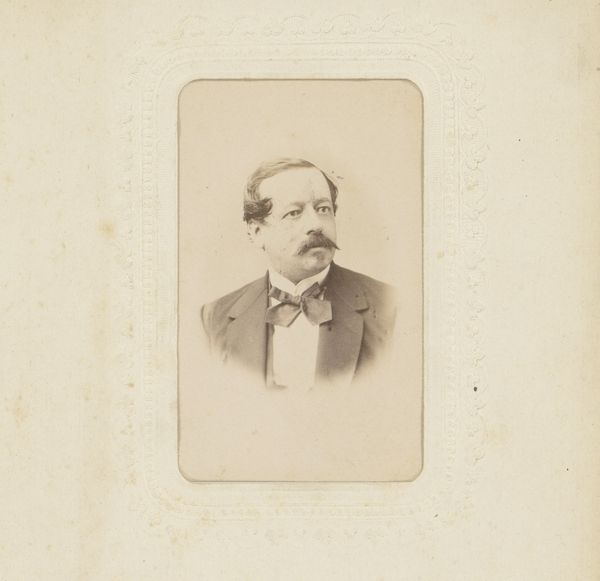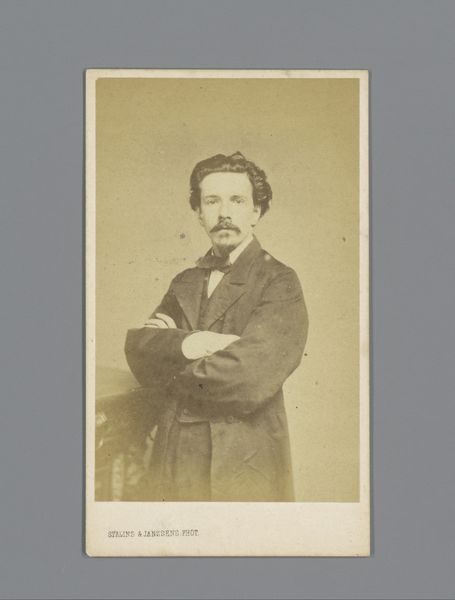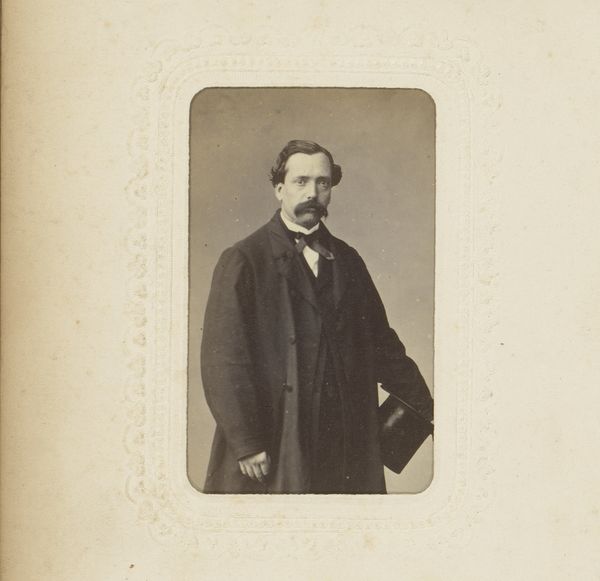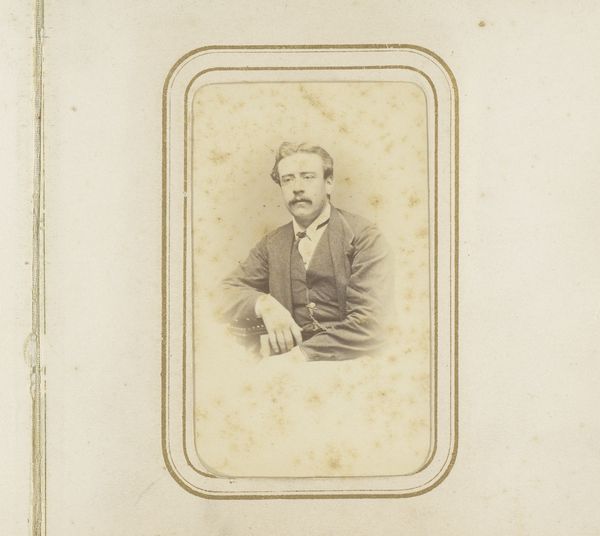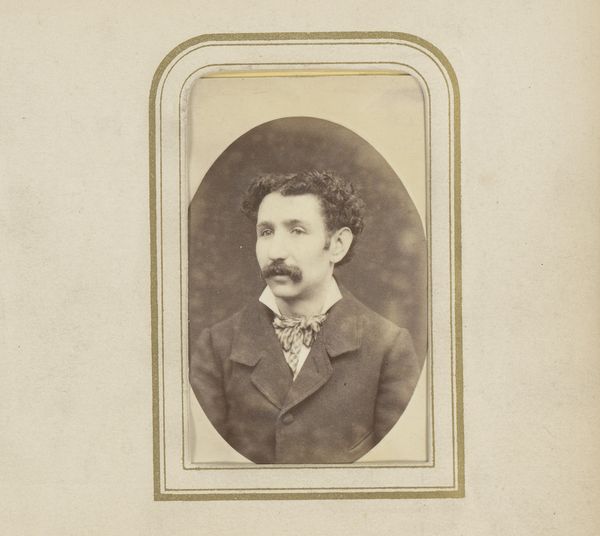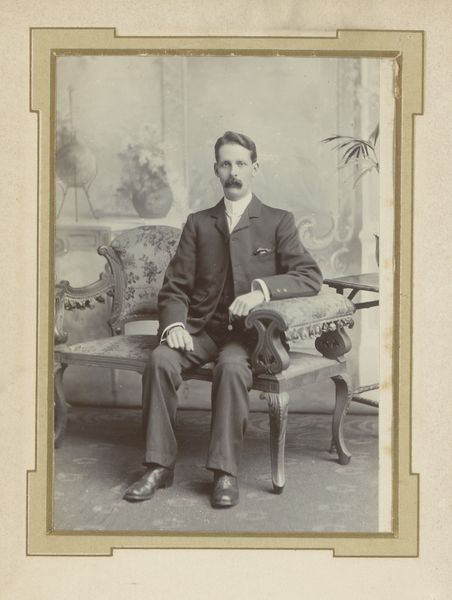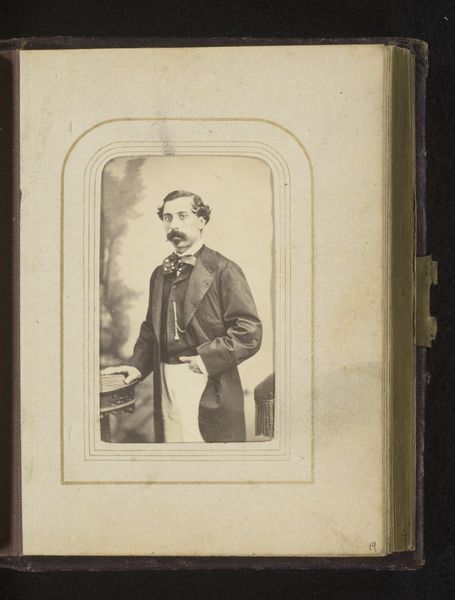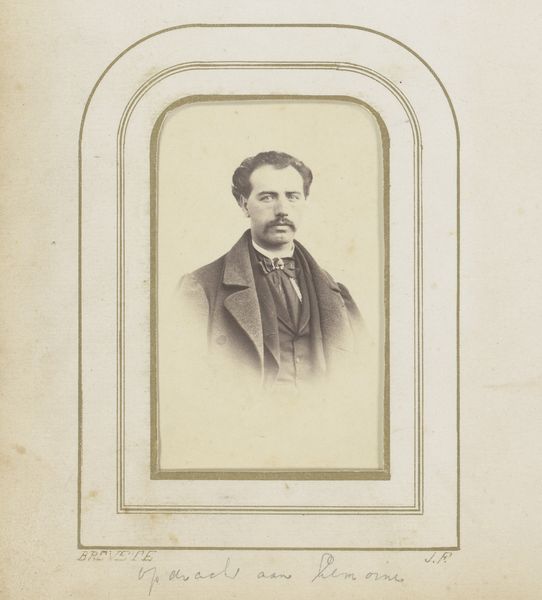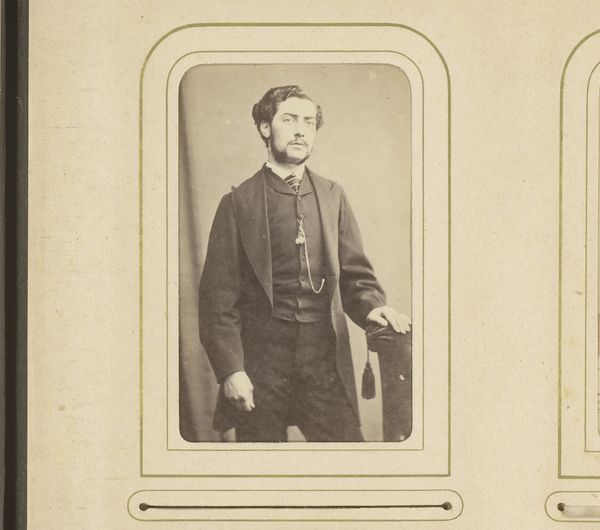
Dimensions: height 83 mm, width 51 mm
Copyright: Rijks Museum: Open Domain
Editor: Here we have "Portrait of a Man Standing by a Chair" by Mayer & Pierson, likely taken sometime between 1855 and 1878. It's a gelatin silver print, so a relatively early example of photography. There's a sort of…quiet dignity to him, but also a melancholy. How do you interpret this work? Curator: The portrait immediately prompts a consideration of representation and power during this period. Photography, then in its relative infancy, offered a new way to solidify bourgeois identity. Who had access to this technology? What narratives were being constructed through these carefully staged images? Editor: So it’s less about the individual and more about…society? Curator: Exactly. Look at his posture – the casual hand in pocket, the slight lean. This carefully constructed nonchalance speaks volumes about the performance of masculinity and class. But let’s consider what is absent. Who isn't in this picture? Whose stories aren't being told? Editor: Right, the working class, women... Curator: Precisely. These early photographs often reinforced existing social hierarchies. It is crucial to remember the context, to ask: Who is doing the looking, and whose gaze is privileged? What ideologies are subtly embedded in this seemingly simple portrait? Editor: That really shifts how I see it. It’s not just a portrait; it's a statement, even if unintentional, about power. Curator: Indeed. The power to represent, to be seen, was – and still is – unevenly distributed. Thinking critically about these images allows us to challenge those power dynamics. Editor: I’ll definitely keep that in mind when looking at similar works. Thanks! Curator: A crucial point, and one that echoes across centuries of art.
Comments
No comments
Be the first to comment and join the conversation on the ultimate creative platform.
